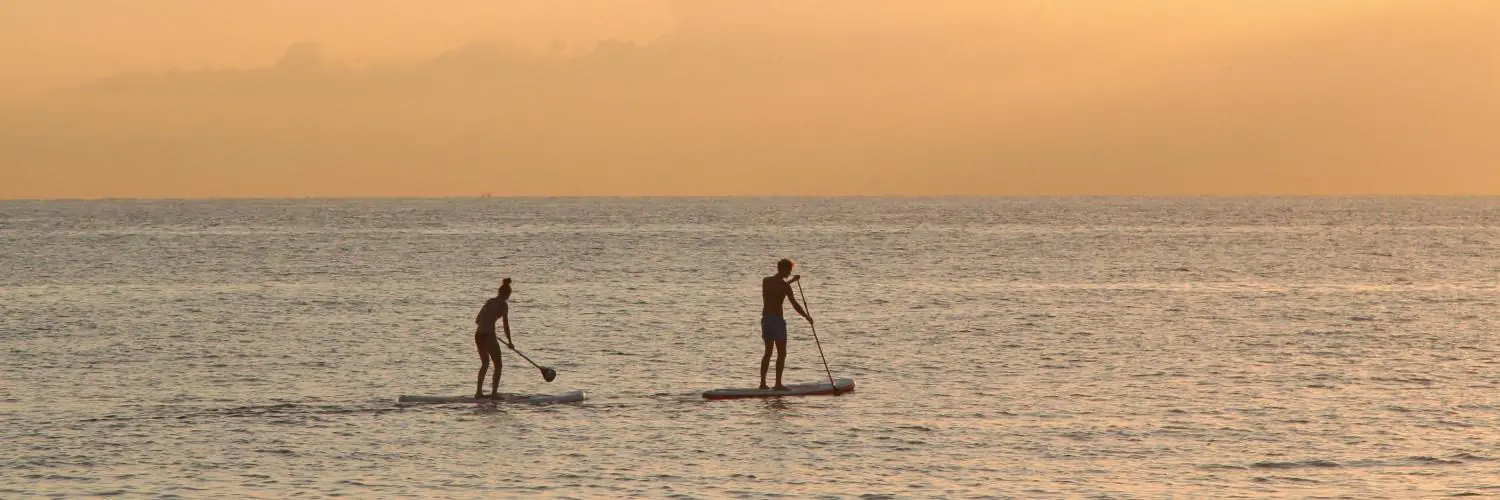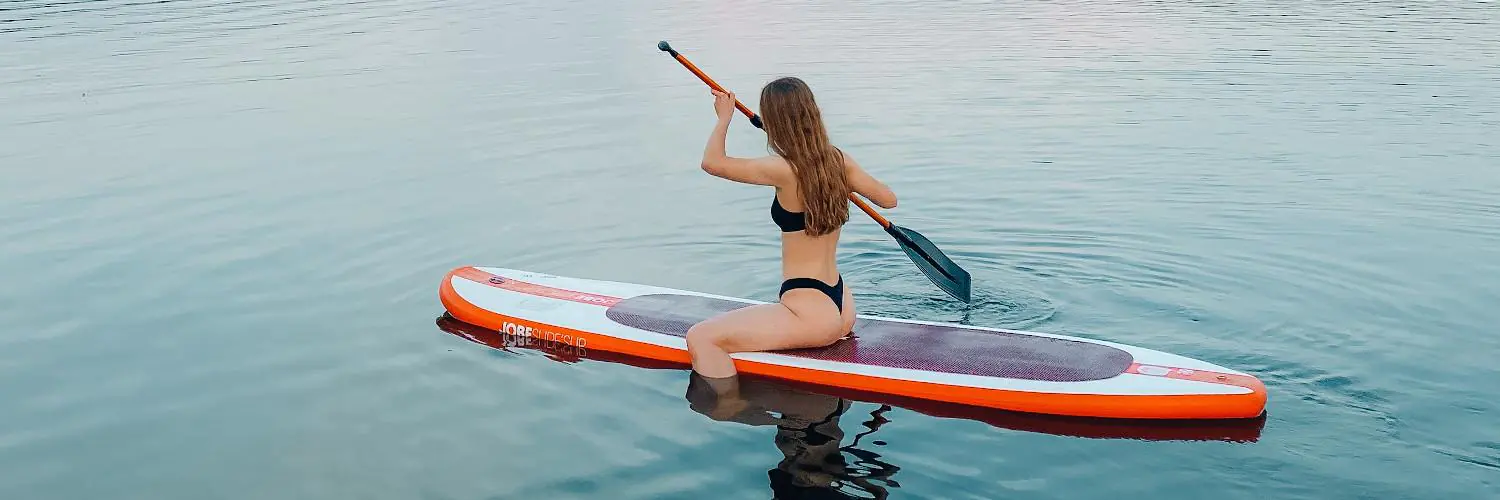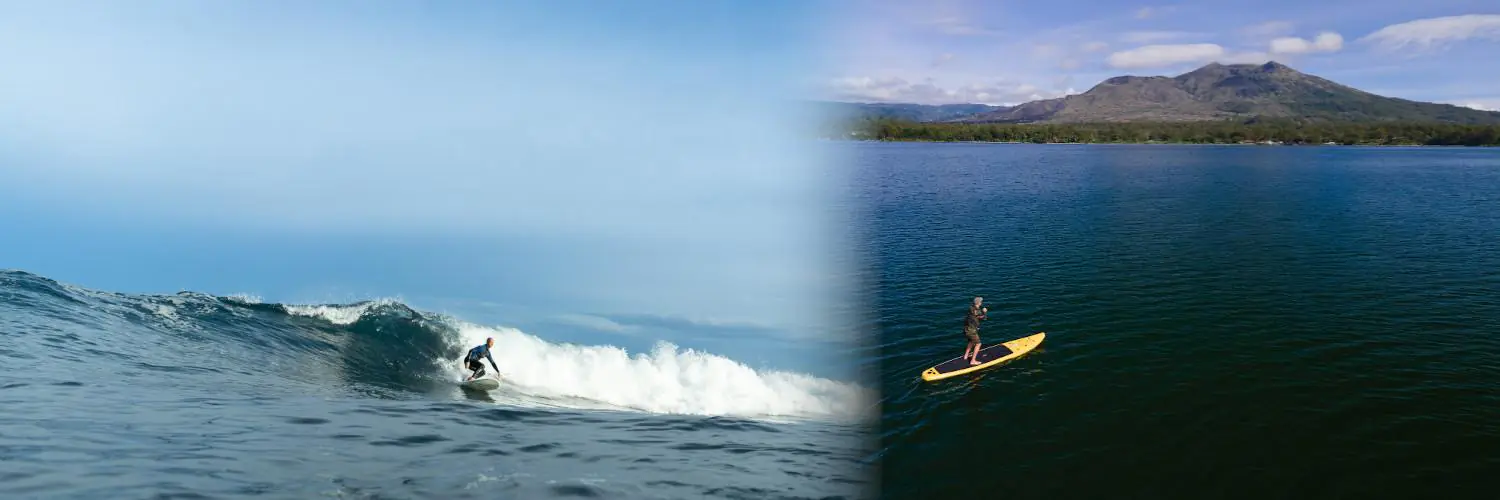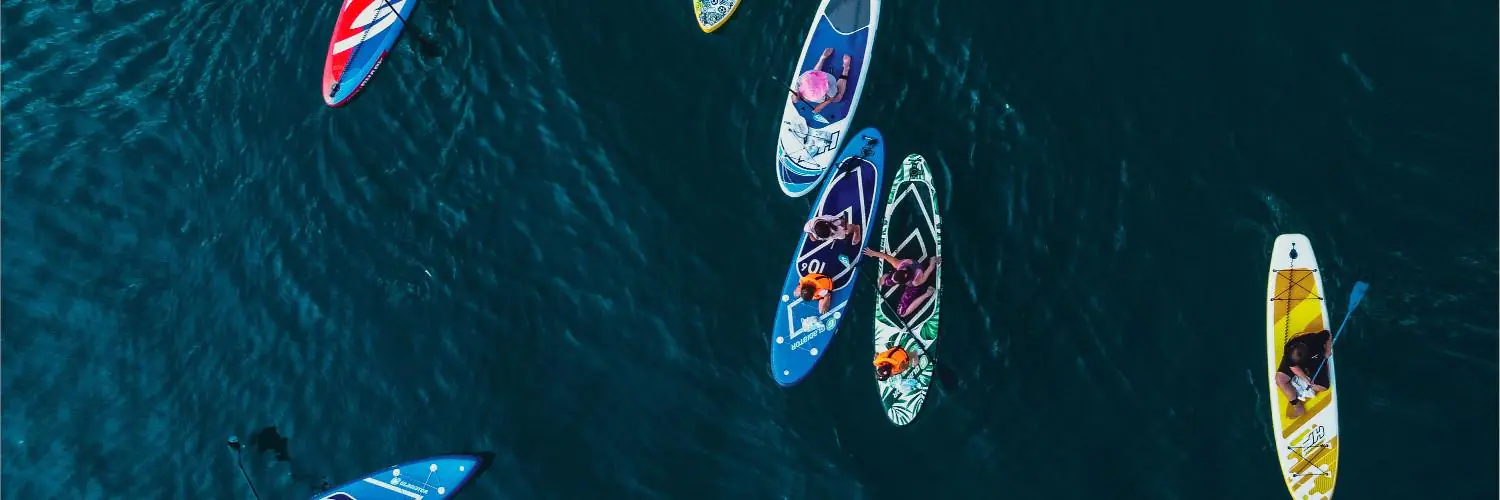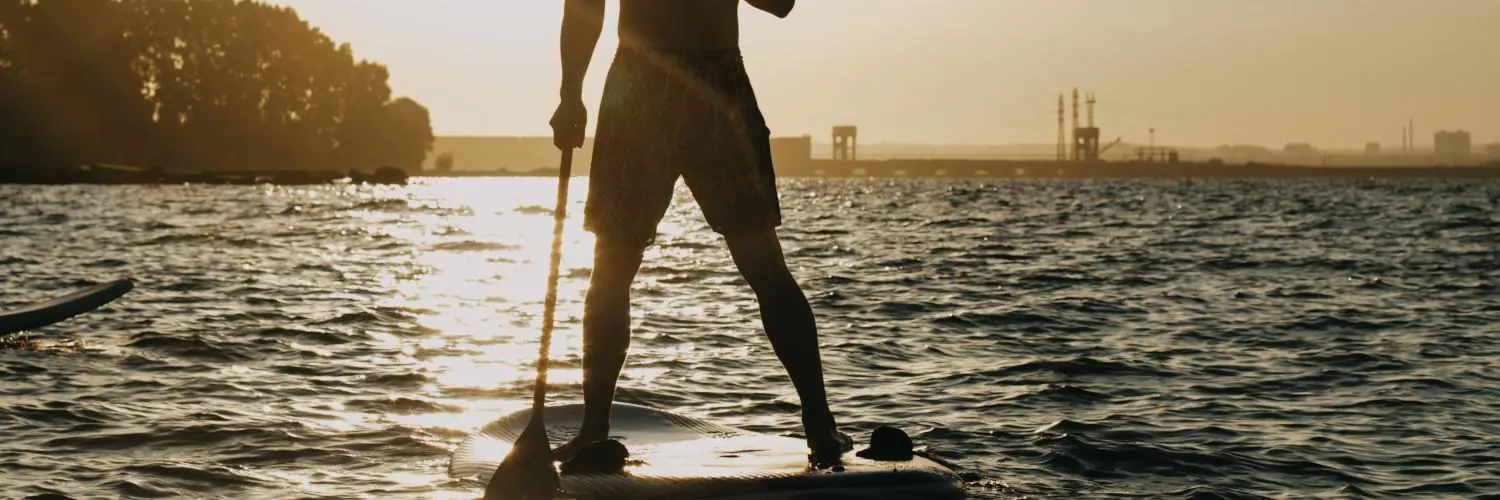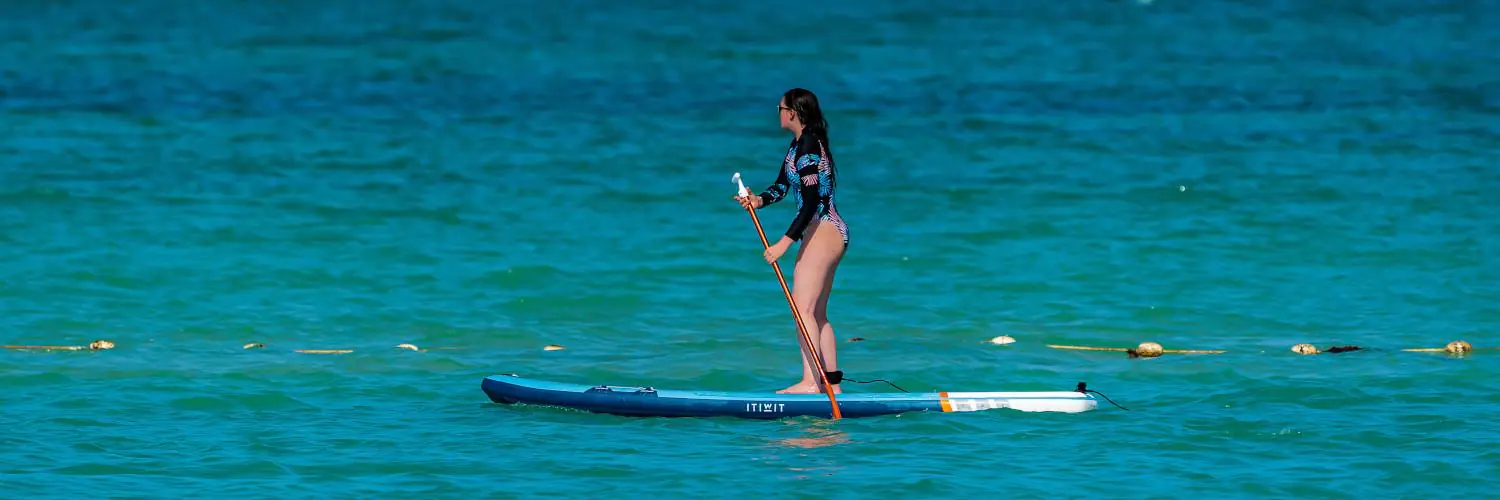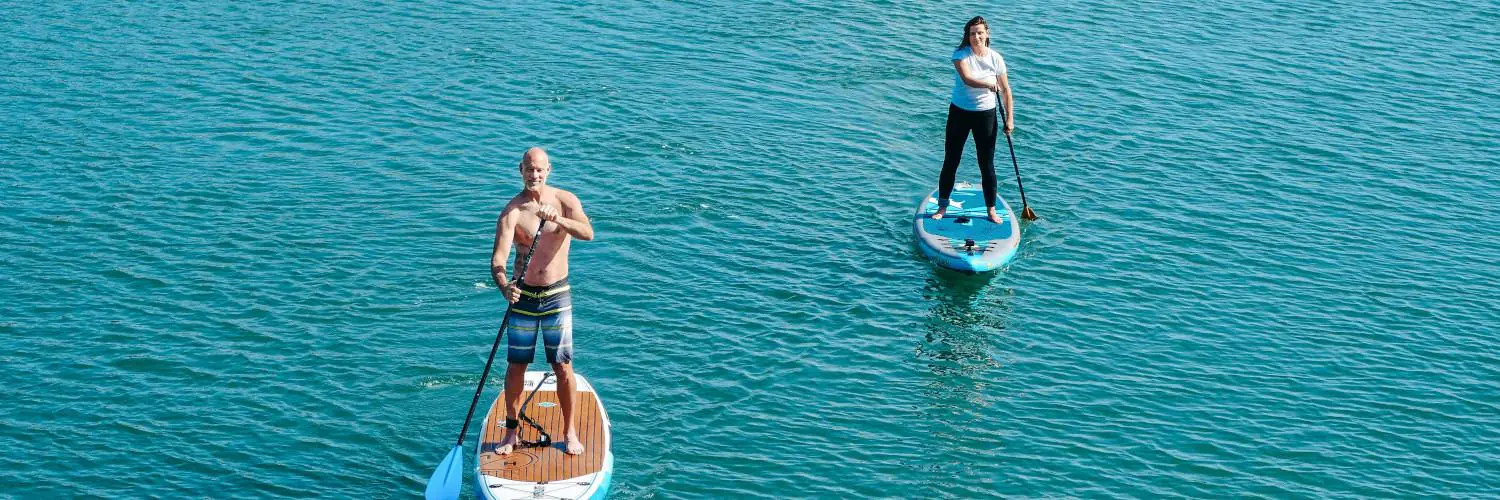Table of Contents
A Straightforward Guide to Stand Up Paddleboarding
Stand up paddle boarding, also known as SUP, has gained significant popularity in recent years as a versatile and enjoyable water sport. Some may wonder if SUP is hard to learn, but the truth is that picking up this sport is relatively easy for beginners. With the right gear, proper technique, and a willingness to practice, most people can quickly become adept at SUP.
Stand up paddle boarding gives your whole body a workout and is fun. It can also be done in just about any body of water like lakes, rivers, and seas. SUP might look like surfing, but its different and easier for more people to try. In fact, stand up paddle boarding has lots of things to do like yoga, fishing, and easy paddling, for different interests and skills.
Learning to paddle on a SUP board needs handling balance, picking the best board and paddle, and getting good at paddling well. For those who are new to the sport, it is highly recommended to start with calm water and progress to more challenging conditions as skill and confidence build. With regular practice and persistence, individuals can quickly become proficient at stand up paddle boarding and enjoy all the benefits it has to offer.
What is SUP?
Stand-up paddling, or SUP, is a water sport where you stand on a board and move move thru the use of a long a paddle. Many like to do it on water like oceans, lakes, rivers, and canals. Long ago, it came from places like Hawaii and the Pacific Islands. These day, it’s mostly for fun, exercise, races, fishing, and yoga.
To engage in SUP, one needs a paddle board and a paddle. The board design varies depending on the specific activity; for instance, there are boards for general use, touring, racing, and fitness or yoga. The paddle has a T-grip on one end and a blade on the other, designed to push water efficiently.
When starting to SUP, proper positioning and technique are needed to ensure a smooth and enjoyable experience. To remain balanced, the rider should stand in the center of the board with their feet shoulder-width apart+. The paddle should be held with the blade angled away from the rider, towards the nose of the board.
Beginners often find SUP easy to pick up, with most people able to get the hang of it after a few sessions. This exercises many muscle groups like legs, hips, arms, shoulders, and the back. SUP improves both your balance and also your endurance.
Understanding Stand Up Paddle Boarding
Stand up paddle boarding (SUP) is a popular water sport that involves standing on a board similar to a surfboard and using a paddle to propel through the water. This thing is very popular now because it is easy to do, can be done in many places, and is good for health.
You can SUP on almost any water like lakes, rivers, and seas. All can do it, no matter age or fitness. It is fun for families and friends to do together outside.
When beginning with stand up paddle boarding, it is essential to select the right board and paddle to suit one’s individual needs. The board should offer stability and be large enough to accommodate the rider’s weight and experience level. A proper SUP paddle should be lightweight, adjustable in length, and have a blade angle designed for efficient water displacement.
In order to start paddle boarding, participants should follow these basic steps:
- Begin by walking into the water until it reaches knee-level.
- Place the paddle horizontally on the board with the blade resting on the water’s surface.
- Straddle the board, keeping knees on either side, and face forward.
- Slowly stand up while holding onto the paddle for balance.
- Position feet shoulder-width apart in the center of the board, using the grab handle as a reference point.
- Begin paddling by alternating strokes on each side of the board.
It is important for stand-up paddlers to maintain balance and adjust foot placement as needed. Engaging the core muscles and maintaining a slight bend in the knees can help in achieving better stability. As new people feel sure and learn more, they can try harder things and other SUP stuff like racing, yoga, or fishing.
Safety is a crucial aspect of stand up paddle boarding. Wearing a life jacket, using a board leash, and understanding local weather and water conditions can greatly reduce the risk of accidents. Also, asking skilled paddlers or approved teachers can give helpful tips on how to do SUP correctly.
Stand up paddle boarding is fun and lets you explore nature, get stronger, and improve your balance. With the right gear, know-how, and training, people of any age and skill can have fun and get better at SUP.
Factors Affecting the Learning Curve
Age and Fitness Level
Age and fitness level can influence the learning curve for stand-up paddleboarding (SUP). While SUP is a full-body workout requiring core strength and stamina, it is possible to adapt the activity to suit various ages and fitness levels. Younger individuals with stronger core muscles and greater endurance may have an easier time learning, while older adults or those with less physical strength might need more practice to master the skills. However, SUP can be enjoyed by people of all ages, as long as they’re in good health and have the ability to balance and perform basic strokes.
Previous Experience in Related Sports
Individuals with experience in related sports like traditional surfing, kayaking, or even SUP yoga may find it easier to learn SUP. Experience in these helps when it comes to coming to terms with balance, movement, and paddling. It also helps when moving from kneeling to standing, a move which is hard for beginners. However, those without any prior experience in water sports can still learn SUP through practice and guidance from experienced paddlers or SUP lessons.
Equipment and Environment
The choice of equipment and the environment in which one learns SUP can significantly affect the learning curve. Beginners should opt for stable, inflatable paddleboards with wider profiles and fins for added stability. A center grab handle helps maintain balance, while an appropriately sized paddle enables efficient strokes. In terms of environment, learning on calm water, such as lakes or flat-water locations, is ideal, as it allows new paddlers to focus on their technique without having to deal with breaking waves, strong currents, or changing water conditions.
Additionally, beginners should consider using personal flotation devices (PFDs) and practicing in shallow water or close to the shore for added safety. As they get better, they can try harder water like small waves or whitewater, depending on what they like.
Mastering Essential SUP Techniques
How to Stand Up
When learning to stand up on a paddle board, it is important to first start with maintaining a proper posture. Begin by kneeling on the paddle board, keeping your knees shoulder-width apart. Slowly, transition from kneeling to standing up by engaging your core muscles and straightening your legs. Make sure your feet are positioned shoulder-width apart, and maintain a slight bend in your knees to help with balance. As you practice standing up, your leg muscles and core strength will improve, making it easier to maintain a standing position on the board.
Proper Paddling Technique
In order to effectively paddle on a SUP, it is crucial to have the proper technique. Hold the SUP paddle with one hand lightly gripping the T-grip, and the other hand grasping the shaft. Ensure that the paddle blade is angled away from you, toward the nose of the board. When paddling, utilize the following strokes:
- Forward Stroke: This stroke propels you forward, making it the most common stroke. Make sure to engage your core and shoulder muscles while reaching the paddle forward, submerging the blade fully into the water before pulling it back towards your body.
- Reverse Stroke: The reverse stroke is essential for stopping or moving backward. It is the opposite motion of the forward stroke, beginning with the paddle behind you and pulling it forward towards your body.
- Sweep Stroke: This stroke is used to turn the board. Reach the paddle out to the side and rotate it in a sweeping motion, using your core muscles to control the turn.
As you practice these, it will become easier to move and control the paddle board.
Maintaining Balance and Stability
One of the most vital aspects of stand-up paddleboarding is maintaining good balance on your board. To maintain balance, pay attention to the following tips:
- Core Strength: Engaging your core muscles is key to maintaining balance and overall stability.
- Posture: Keep your back straight and chin up while standing on the board. Ensure that your knees are slightly bent, which will help you absorb any small waves or choppy water.
- Foot Position: Place your feet shoulder-width apart in a parallel stance.
- Look Ahead: Focus on a point in the distance instead of looking down at your feet.
Practice is crititcal. As you get better at paddleboarding, your ability to stay upright and steady will get better, letting you try harder paddleboarding things like surfing or racing.
Closing
Paddleboarding, or SUP, is seen as easy to learn. Newcomers can grasp it quickly and have fun right away.
One of the key elements to learning SUP is practicing the correct way to hold the paddle. Ensure that the paddle blade is angled away from you, toward the nose of your board. Hold the T-grip with one hand and the shaft with the other, alternating hand positions when switching paddling sides.
When you want to stay steady, put your feet apart on the board. Look at the handle in the middle to find the best spot for good balance and easy paddling.
As a new person, it’s key to keep trying, be open to advice, and take lessons. This will make your balance and paddling better and give you more trust in the water.
To sum up, stand up paddle boarding is not too hard to start. With good help, practice, and a good mind, all can enjoy SUP as a fun way to be on the water.

